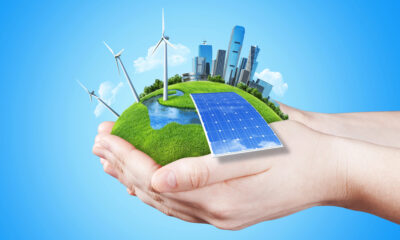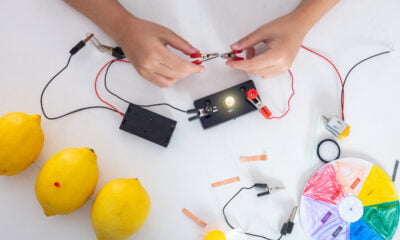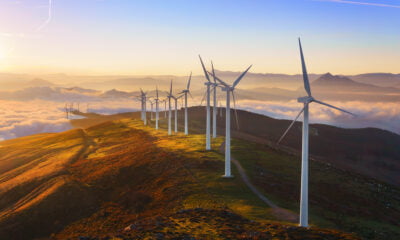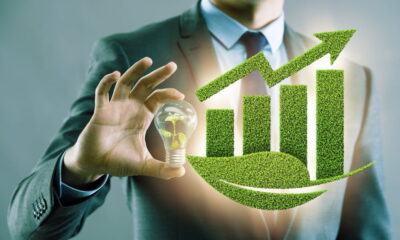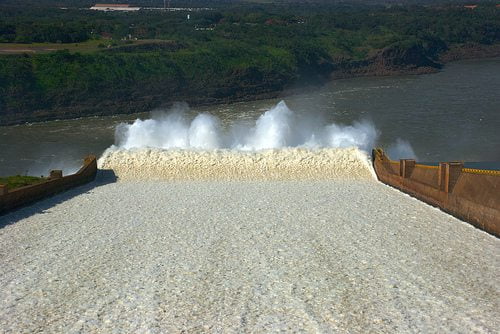

Energy
Hydropower: water wheels and large-scale dams
With India set to fast-track almost 100 new hydropower plants, and as the Federal Energy Regulatory Commission in America prepares to issue further hydroelectric projects across the country, Joseph Iddison takes a closer look at producing electricity from flowing water.
The process of generating electricity from a hydropower generator involves passing natural water flow through a generator to produce kinetic energy, which is then converted into electricity.
Producing electricity from water has long been an established form of energy generation. Ancient Greek farmers used water wheels to grind wheat into flour. Placed in a river, the water wheel picks up flowing water in buckets located around it, with the kinetic energy of the flowing river turning the wheel. This mechanical energy runs the mill.
In the 1700s, hydropower was broadly used for milling of lumber and grain and for pumping irrigation water.
Being able to harness the power possibilities of water saw hydropower play an important part in the Industrial Revolution. It gave impetus to the growth of the machine-shop industries in the early 19th century. Although the steam engine had already been developed, coal was scarce and difficult to ship. However, by the middle of the century, the opening of the canals enabled coal to be distributed and transported, meaning it became a more sought-after resource.
Nevertheless, hydropower remained a useful source of energy, mainly due to its controllability and being naturally replenished. Developments in technology saw the first hydroelectric power plant built – at Niagara Falls in 1879. In 1881, street lamps in the city of Niagara Falls being powered by the electricity generated from hydropower. Just a year later, the world’s first hydroelectric power plant became operational in the US – in Appleton, Wisconsin. The station produced 12.5 kilowatts of power and used direct-current technology.
More than 200 hydropower stations were in operation around the world before the 20th century. Such was the productivity of hydropower that, in 1940, it accounted for 40% of America’s electricity generation.
Hydropower in recent years
Nowadays, hydropower plants use alternating current and typically consist of three parts: an electric plant where the electricity is produced; a dam that can be opened or closed to control water flow; and a reservoir where water can be stored.
The water behind the dam flows through an intake and pushes against blades in a turbine, causing them to turn. The turbine then spins a generator to produce electricity. The amount of electricity that can be generated depends on how much water moves through the system as well as the height at which the water drops. This electricity can then be transported over long-distance electric line.
Contemporary hydroelectric systems vary in size and application. Micro-hydroelectric plants are the smallest types of hydroelectric systems and can generate between 1 kilowatt and 1 megawatt of power. They are ideal for powering smaller services such as processing machines and small farms, and often use rivers as their water source. Large hydroelectric systems can produce electricity to power communities and cities.
At present, hydroelectric power provides almost a fifth of the world’s electricity.
Modern day usage and benefits
As one of the most cost-effective resources, hydropower is the cheapest way to generate electricity today. Apart from the construction cost of the dam and plant (for large-scale generators), the energy source is free, controllable and naturally replenished. And, according to the British Hydro Association, modern hydro generators can convert over 90% of the energy in the available water into electricity – more efficient than any other form of renewable generation.
Another advantage to hydropower is the fact that it is readily available; the flow of water through the turbines to produce electricity can be accessed and managed on demand. There is also the benefit of community prospects that some reservoirs offer, such as swimming and other leisure activities for the public.
Disadvantages and criticism
Some critics have argued that hydropower plants and dams as a technique of mitigating climate change are in fact more harmful to the planet than we are lead to believe.
In a study published in Mitigation and Adaptation Strategies for Global Change, Philip Fearnside estimated that, in 1990, the Curuá-Una dam in Pará, Brazil, produced more than three-and-a-half times the greenhouse gases than what would have been produced by generating the same amount of electricity from oil.
Furthermore, hydropower generators, particularly when large-scale (and therefore constructing a dam and reservoir), are often criticised for altering river ecosystems, killing fish and affecting water quality. Indeed, initial plants were often less considerate of local wildlife and social effects, mainly due to the environmental criteria for the build being far less rigorous.
Currently, however, hydro developments are subject to stringent environmental standards. Before a project can be developed, it must go through a process that examines its impact on both the environment and on local communities. Water flow, water quality, water shed, management, fish passage, habitat protection, as well as the welfare and lifestyle of the local communities are also taken into consideration.
Perhaps the main reason for using and investing in hydro, though, is because of its role as a provider of baseload power (the minimum amount of electricity needed) – something that wind and solar cannot do. This means that there is a crucial place for hydro projects as part of a renewable energy mix, as we seek to find alternative sources of power and energy to the current dominant, polluting options.
Further reading:
What happens when clean energy gets dirty
Brazil hydropower potential linked to Amazon conservation
Majority of EU member states support clean energy: infographic analysis


 Environment10 months ago
Environment10 months agoAre Polymer Banknotes: an Eco-Friendly Trend or a Groundswell?

 Environment12 months ago
Environment12 months agoEco-Friendly Home Improvements: Top 7 Upgrades for 2025

 Features9 months ago
Features9 months agoEco-Friendly Cryptocurrencies: Sustainable Investment Choices

 Features10 months ago
Features10 months agoEco-Friendly Crypto Traders Must Find the Right Exchange


